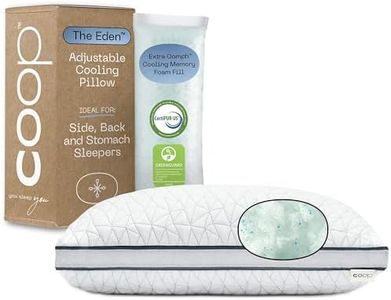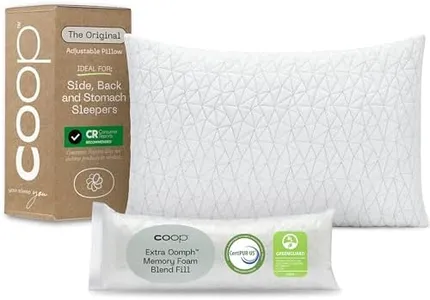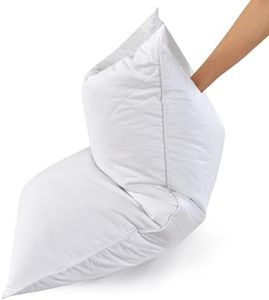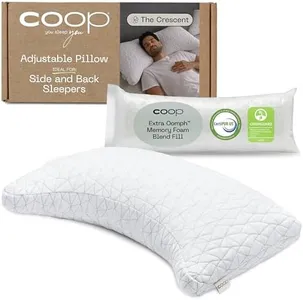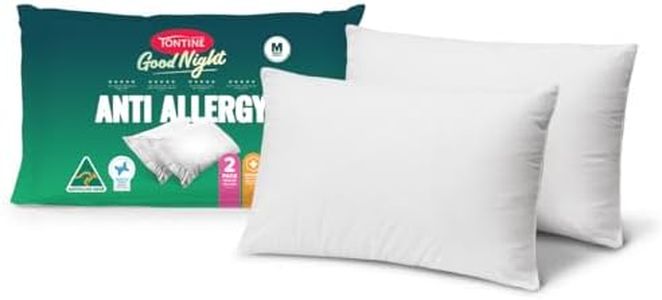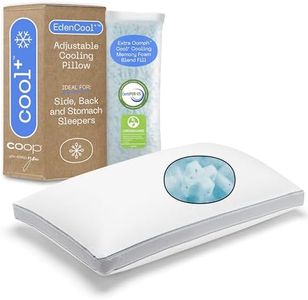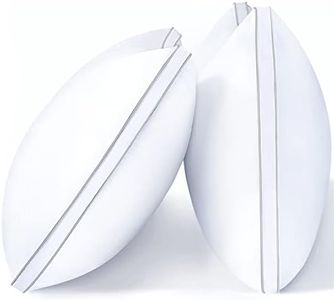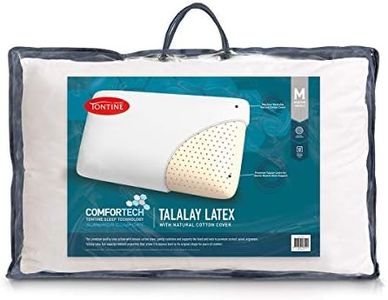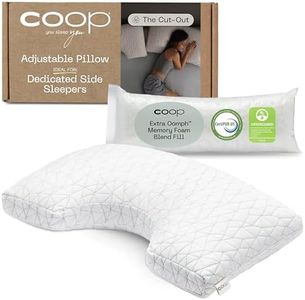We Use CookiesWe use cookies to enhance the security, performance,
functionality and for analytical and promotional activities. By continuing to browse this site you
are agreeing to our privacy policy
10 Best King Pillows
From leading brands and best sellers available on the web.By clicking on a link to a third party's website, log data is shared with that third party.
Buying Guide for the Best King Pillows
When shopping for king pillows, it's all about finding the right balance between comfort, support, and how well the pillow fits both your sleeping style and your bed size. A king pillow is larger than a standard or queen pillow, making it ideal for larger beds and people who like a bit more space for their head, neck, and shoulders. The key is to think about how you sleep, whether you need extra support, and how the pillow’s features will affect your comfort throughout the night.SizeSize refers to the dimensions of the pillow. King pillows are typically around 20 x 36 inches, making them longer than standard and queen pillows. This extra length is important because it provides more space to move around and is designed to fit across a king-sized bed perfectly. If you have a king-sized bed, or you like to have plenty of pillow to cradle your head, shoulders, or even to hug, a king pillow is likely a good fit. You should not use a king pillow on a smaller bed unless you specifically want an oversized look.
Fill MaterialFill material means what’s inside the pillow, which affects both its feel and support. Choices include memory foam, feather/down, synthetic fiber, and latex. Each kind of fill has a different feel—memory foam molds to your head and neck, down is soft and fluffy, synthetic fibers are hypoallergenic and often easy to care for, while latex pillows tend to be firm and supportive. Your sleeping position and personal preferences guide this choice: side sleepers might prefer thicker, firmer varieties (like memory foam or latex) for neck support, while back and stomach sleepers often favor softer or more flexible fills (like down or synthetic fibers).
Loft (Thickness)Loft means how thick or high the pillow is when lying flat. It is crucial because it changes how much support your head and neck receive. Low loft is thinner, in the 3-inch range, and suits stomach sleepers to help keep the spine aligned. Medium loft is about 4-5 inches thick and is a good all-rounder, suitable for back sleepers. High loft, over 5 inches, is better for side sleepers, as it fills the space between your neck and shoulder. Your dominant sleeping position should decide the right loft for you.
FirmnessFirmness is about how hard or soft the pillow feels. A soft pillow offers a gentle, plush feeling and sinks under your head, while a firm pillow gives strong support without much give. Side sleepers usually need a firmer pillow to keep their neck aligned, back sleepers tend to prefer medium firmness for balanced support, and stomach sleepers need a softer pillow to avoid craning their neck upward. When picking firmness, think about your comfort and your primary sleep position.
Allergy ConsiderationsSome pillow materials can attract dust mites or harbor allergens, which is important if you have allergies or asthma. Synthetic fills and certain treated covers are often marketed as hypoallergenic, helping reduce the risk of allergens. If allergies are a concern for you, choose easy-to-wash, hypoallergenic pillow options and consider using pillow protectors.
Ease of CleaningHow easily you can clean your pillow matters for long-term comfort and hygiene. Some pillows can be machine washed, while others might need spot cleaning or professional cleaning. If you want something low-maintenance, check if the pillow is machine-washable or comes with a removable, washable cover. Consider your lifestyle and commitment to pillow upkeep when deciding.


